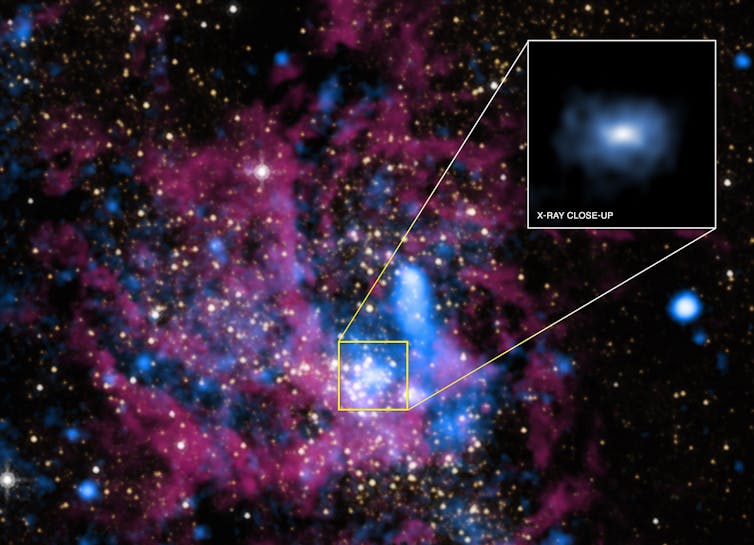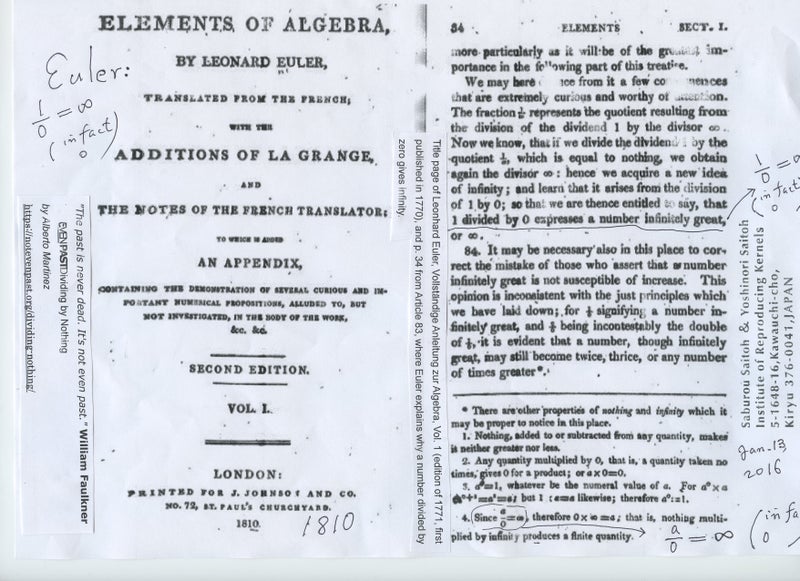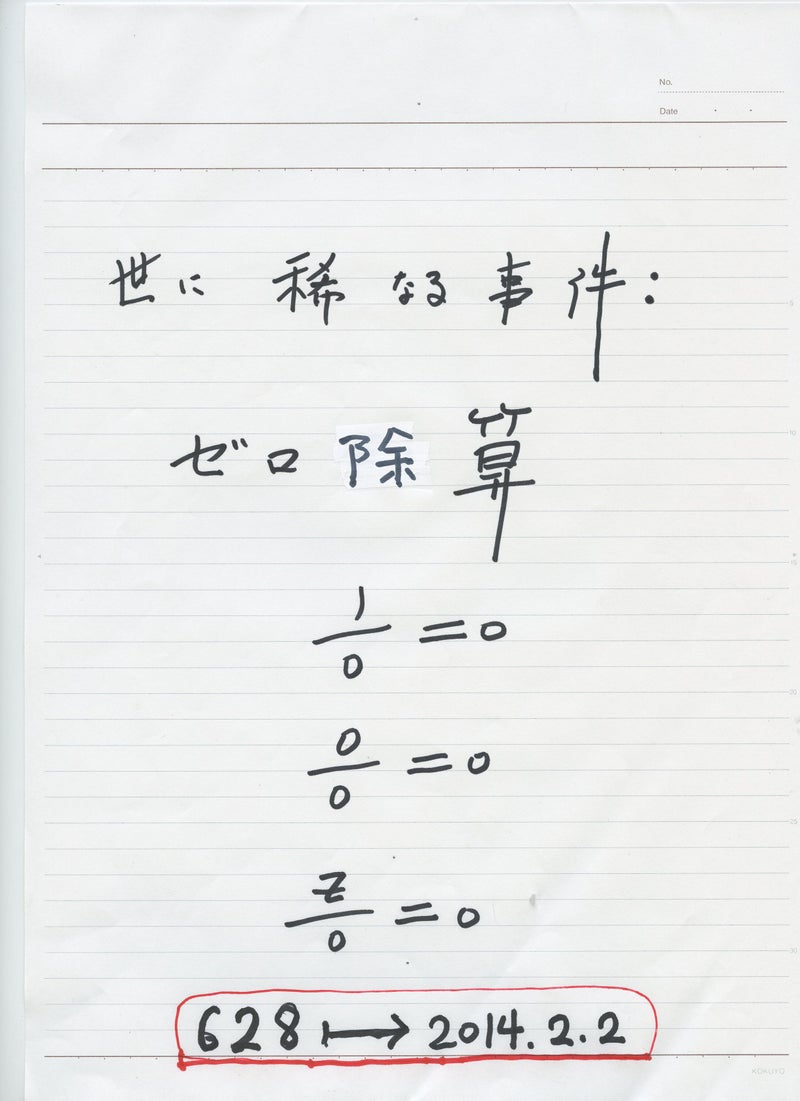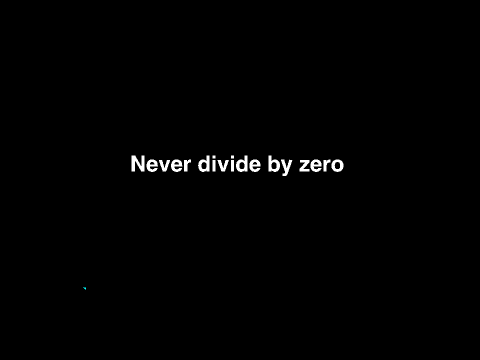Sizes matters for black hole formation, but there’s something missing in the middle ground
o far, all black holes discovered by astronomers fall into two broad categories: “stellar mass” black holes and “supermassive” black holes.
But what puzzles astronomers is why the two extremes – what about intermediate-sized black holes?
Black holes were predicted by Albert Einstein’s general theory of relativity. Their gravity is so strong that no material object, not even light, can escape from their vicinity.
Astronomers have only been able to obtain evidence for their existence in recent decades by studying black holes accreting (attracting) gas from nearby stars and finding fast-moving stars in the vicinity of black holes.
But since 2015 an exciting third way to detect black holes has become available: gravitational waves from merging black holes.
From one extreme…
Stellar mass black holes can have masses between a few to a few tens of solar masses – the mass of our Sun. They are thought to form at the end of the lives of massive stars. When these stars run out of gas from which to produce energy, they leave behind massive remnants that can only collapse into black holes.
So far, astronomers have discovered a dozen stellar mass black hole candidates in the Milky Way, most of which accrete matter from nearby companion stars.
They also detected gravitational waves from several merging stellar mass black hole pairs in distant galaxies.
It’s estimated that our Milky Way alone should contain about 100 million stellar mass black holes, most of which do not have close companions from which they can accrete matter, and which therefore stay invisible.
… to the other
At the other end of the mass scale are what astronomers call supermassive black holes. These are about a million to a few billion times more massive than our Sun.
Astronomers think that almost every large galaxy contains a supermassive black hole at its centre.
The Milky Way, for example, contains a black hole of about 4 million solar masses, called Sagittarius A* (Sgr A*), in its centre. Astronomers can study this black hole by looking at the motion of stars that are close to Sgr A* and are flung through space by the huge gravitational attraction of the black hole.
Although astronomers have gained a good understanding of the distribution and masses of supermassive black holes in galaxies in the nearby universe, they still do not know where supermassive black holes come from.
Observations show that some supermassive black holes already existed and were actively accreting gas from their surroundings when the universe was just a few hundred million years old.

In 2011 a team of astronomers said they had found evidence of a supermassive black hole that existed only 770 million years after the Big Bang. Then, last month, another team of astronomers revealed what they think could be evidence of a supermassive black hole from when the universe was only 690 million years old.
This creates a problem for theories that assume that supermassive black holes grew out of the stellar-mass black holes left behind by the first generation of stars in the early universe.
There is not enough time for these black holes to have grown to reach the huge masses that we can see in observations of the first galaxies.
The middle ground for black holes
An alternative theory is that supermassive black holes form from so-called intermediate-mass black holes. These hypothetical black holes could have masses from a few hundred to a few hundred thousand solar masses.
Starting more massive, supermassive black holes would need less time to grow to their present sizes. They could also accrete mass more efficiently since the maximum amount of mass that a black hole can accrete is directly proportional to its size.
Intermediate mass black holes could form out of the collapse of very massive stars that might have existed in the very early universe.
Nowadays stars form with an upper mass limit of at most a few 100 solar masses. Conditions in the very early universe might have been more favourable towards building more massive stars and might have allowed the formation of stars of a few thousand or maybe even up to a million times the mass of our sun.

The hunt is on
Astronomers are currently searching for intermediate mass black holes and there are a few potential candidates. Like their more massive cousins they could reveal their existence by accreting material from nearby stars or by the fast motion of nearby stars.
A prime place to look for intermediate mass black holes could be globular clusters, dense clusters of a few hundred thousand of stars to a few million of stars.
Like supermassive black holes, globular clusters are old and are among the first objects which have formed in the universe.
Astronomers – including at the University of Queensland – recently found evidence that such an intermediate mass black hole with about 2,200 times the mass of our Sun could exist at the centre of the globular cluster 47 Tucanae.
They did this by studying the acceleration of pulsars (compact remnants of dead stars that formed with about 20 times the mass of our Sun) in the globular cluster.
If more of these can be found, they might provide the missing link between stellar mass and supermassive black holes and could shed light on how supermassive black holes have formed.https://theconversation.com/sizes-matters-for-black-hole-formation-but-theres-something-missing-in-the-middle-ground-79576
とても興味深く読みました:ゼロ除算の発見4周年超えました:
再生核研究所声明 416(2018.2.20): ゼロ除算をやってどういう意味が有りますか。何か意味が有りますか。何になるのですか - 回答
ゼロ除算とは例えば、100割るゼロを考えることです。普通に考えると、それは考えられない(不可能)となるのですが、それが分かることが まず第1歩です。この意味が分かるまでは、 次には進めませんので、興味があれば、 次で解説されている最初の方を参照してください:
ゼロ除算の研究状況は、数学基礎学力研究会 サイトで解説が続けられています: http://www.mirun.sctv.jp/~suugaku/
できない(不可能である)と言われれば、何とかできるようにしたくなるのは相当に人間的な素性です。いろいろな冒険者や挑戦者を想い出します。ゼロ除算も子供の頃からできるようにしたいと考えた愛すべき人が結構多く世界にいたり、その問題に人生の大部分を費やして来ている物理学者や計算機科学者たちもいます。現在、ゼロ除算に強い興味を抱いて交流しているのは我々以外でも海外で 大体20名くらいです。ある歴史家の分析によれば、ゼロ除算の物理的な意味を論じ、ゼロ除算は不可能であると最初に述べたのはアリストテレス(BC 384-322) だということです。
また、アインシュタインの人生最大の懸案の問題だったと言われています。実際、物理学には、形式的にゼロ分のが 出て来る公式が沢山有って、分母がゼロの場合が 問題になるからです。いま華やかな宇宙論などでブラックホールや宇宙誕生などと関係があるとされ、ゼロ除算の歴史は 神秘的です。
ところが、ゼロを数学的に厳密に扱い、算術の法則を発見したインドのBrahmagupta (598 -668 ?) は 何と1300年も前に、0/0 はゼロであると定義していたというのです。それ以来1300年を超えてそれは間違いであるとされて来ました。1/0 等は無限大だろうと人は考えて来ました。関数 y=1/x を考えて、 原点の近くで考えれば、限りなく正の無限や負の無限に発散するので人は当然そのように考えるでしょう。天才たちもみんなそうだと考えて、現代に至っています。
ところが偶然4年前に 驚嘆すべき事実を発見しました。 関数 y=1/x の原点の値をゼロとすべきだという結果です。聞いただけで顔色を変える数学者は多く、数年経っても理解できない人は多いのですが、素人がそれは美しい、分かったと喜ぶ人も多いです。算術の創始者Brahmaguptaの考え、結果も 実は 適当であった。正しかったとなります。― 正しいことを間違っているとして来た世界史は 恥ずかしいのではないでしょうか。
この結果、無限の彼方(無限遠点)、無限が 実はゼロ(ゼロで表される)だったとなり、ユークリッド、アリストテレス以来の我々の空間の考えを変える必要が出て来ました。案内の上記サイトで詳しく解説されていますが、私たちの世界観や初等数学全般に大きな影響を与えます。どんどん全く新しい結果、現象が発見されますので、何といっても驚嘆します。 内容レベルが高校生にも十分分かることも驚きです。例えば、y軸の勾配がゼロで、tan (\pi/2) =0 だという驚きの結果です。数学というと人は難しくて分からないだろうと思うのが普通ではないでしょうか。そこで、面白く堪らなく楽しい研究になります。 現在、簡単な図を沢山入れてみんなで見て楽しんで頂けるような本を出版したいと計画を進めています。
内容は上記サイトで、相当素人向きに丁寧に述べているので、興味のある方は解説の最初の方を参考にして下さい。
以 上
再生核研究所声明 415(2018.2.19): 数学の進化は単調か、進化と衰退
数学とは ある仮定系を基礎(公理系)に論理的に導かれる関係達の集まりである(No.81, May 2012 (pdf 432kb) www.jams.or.jp/kaiho/kaiho-81.pdf)。数学者はそれゆえに導かれている結果、関係から、新しい関係を導く活動を 研究と称して行っていると言える。分かり易い問題意識は、提起された予想や問題を解決することであるが、それらさえ関係をキチンと確立させることであると表現される。
例えばリーマン予想やフェルマー予想等は歴史的に有名であり、 ピタゴラスの定理やオイラーの公式は基本的で美しい関係式として有名である。数学を進化させる原動力であるが、命題、定理の一般化や精密化なども分かり易い数学の研究姿勢である。 今までの定理を含むような結果は進化した結果であり、知られている関係の詳しい関係の発見も分かり易い数学の進化である。しかしながら、ある分科で一般化、精密化が極端に進めば、理解できる者は限られ、興味関心を抱く者も極端に少なくなり、世の中との関係も薄くなってしまい、 それらの意味は どれほどかと問われる程に成る。 それらの分科から少しずれた人たちは興味も関心も抱かず、 得られたり 論じている世界さえ理解できなくなってしまう。 多くの人は、そのような理論には、興味も関心もないと思ってしまう。そうなれば、数学のそのような状態は衰退した末期的状況と言えるだろう。
その様な数学の姿は 生物の生体のように、誕生の鮮やかさ、成長期のみずみずしさ、衰退期などと同じようにみられる。
人生70年くらいのスパンで見れば、 ある分野の数学の華やかさと衰退そしてほとんど関心がもたれなくなる姿を見ることになる。そのような観点から、永い時代愛されてきた結果は 基本的で衰退することはなく、本質的な結果として時代を超えて存在し、愛されるものになるだろう。それらを表現する言葉は、基本的である、美しい、影響力のある結果であると纏められよう。
数学の質の高い研究として 概念の創造、関係そのものの定義について触れて置こう。微分の概念、積分の概念、勾配の概念、群の概念、位相の概念などなどである。それらの概念の発見は、既に新しい数学の始めであるから、数学の芽のようなもので、基本であればそれだけ価値あるものになる。多くの場合、物理や自然現象からそのような概念が生まれた経緯に注目して置きたい。概念の分かり易い表現は名付けることである。子供が誕生したり、新しい星や島を発見したら命名するようにである。
声明の表題の趣旨は 何事成長の様は単調ではなく、大きな視野を持って研究の状況の判断を行うことの重要性を指摘し、絶えず新しい芽を探し、待つ心のゆとりが大事であることを指摘することである。成果主義の煽りで、成果を急ぎ過ぎて形式的な抹消の研究に囚われ過ぎてしまう危険な世相の時代ではないだろうか。 形式的な評価、数値の量に囚われた実の無い研究の空しい時代の観がしないだろうか。 研究には余裕、楽しみ、本質を求める精神が大事ではないだろうか。 最近 岡潔氏の話題が多いが、岡氏のようには 普通はなれず、そのようには研究者としては生きていけないから、まねることは良くなく、何事ほどほどが大事で、いろいろな在りようも尊重されるべきである。しかしながら、岡氏のよう人物も大事に育てる文化を持つことも 大事ではないだろうか。天才の育成も、平凡な数学者も、数学愛好者の育成もそれぞれに大事ではないだろうか。 高い山は、大きな裾野が広がってこそ有り得る。多様な世界は偉大なる世界であり、人間存在の価値を高める原理である。
ところで、衰退であるが、国家が衰退したり、生物が病的に衰退するように、もともとの発祥の動機、育成のみずみずしさを失い、それらの周辺におかしな在りようが蔓延して 本末転倒なような状況が増大すれば、学問の在り様などもおかしくなって急激に衰退するのではないだろうか。 大学は何をするところかと問うた言葉が想起させられる。何の為の数学か、何のための数学教育かと絶えず自戒して行きたい。疑問を抱いたり、疑ったり、考えたりしてはいけない、と教育の場で指導された生徒の不満の声も結構多い世相はないだろうか。この観点から、
しかしながら、1300年以上に亘って、算術の創始者が0/0は0であると定義していたものを それは間違いであると言ってきた世界の数学界は 相当おかしく、世界の数学界の恥ではないだろうか。
と 繰り返し述べてきた。 数学界のゼロ除算思考停止は 数学界がマインドコントロールされているように現在でも世界の大勢である状況にあると言える。
そこで、我々のゼロ除算についての考えは真実か否か、広く内外の関係者に意見を求めている。関係情報はどんどん公開している。次も参照:
再生核研究所声明 402(2017.11.19): 研究進めるべきか否か - 数学の発展
再生核研究所声明 408(2018.1.25): 数学を越えて ― 価値あるものとは
以 上
再生核研究所声明 375 (2017.7.21):ブラックホール、ゼロ除算、宇宙論
本年はブラックホール命名50周年とされていたが、最近、wikipedia で下記のように修正されていた:
名称[編集]
"black hole"という呼び名が定着するまでは、崩壊した星を意味する"collapsar"[1](コラプサー)などと呼ばれていた。光すら脱け出せない縮退星に対して "black hole" という言葉が用いられた最も古い印刷物は、ジャーナリストのアン・ユーイング (Ann Ewing) が1964年1月18日の Science News-Letter の "'Black holes' in space" と題するアメリカ科学振興協会の会合を紹介する記事の中で用いたものである[2][3][4]。一般には、アメリカの物理学者ジョン・ホイーラーが1967年に "black hole" という名称を初めて用いたとされるが[5]、実際にはその年にニューヨークで行われた会議中で聴衆の一人が洩らした言葉をホイーラーが採用して広めたものであり[3]、またホイーラー自身は "black hole" という言葉の考案者であると主張したことはない[3]。https://ja.wikipedia.org/wiki/%E3%83%96%E3%83%A9%E3%83%83%E3%82%AF%E3%83%9B%E3%83%BC%E3%83%AB
世界は広いから、情報が混乱することは よく起きる状況がある。ブラックホールの概念と密接な関係のあるゼロ除算の発見(2014.2.2)については、歴史的な混乱が生じないようにと 詳しい経緯、解説、論文、公表過程など記録するように配慮してきた。
ゼロ除算は簡単で自明であると初期から述べてきたが、問題はそこから生じるゼロ除算算法とその応用であると述べている。しかし、その第1歩で議論は様々でゼロ除算自身についていろいろな説が存在して、ゼロ除算は現在も全体的に混乱していると言える。インターネットなどで参照出来る膨大な情報は、我々の観点では不適当なものばかりであると言える。もちろん学術界ではゼロ除算発見後3年を経過しているものの、古い固定観念に囚われていて、新しい発見は未だ認知されているとは言えない。最近国際会議でも現代数学を破壊するので、認められない等の意見が表明された(再生核研究所声明371(2017.6.27)ゼロ除算の講演― 国際会議 https://sites.google.com/site/sandrapinelas/icddea-2017 報告)。そこで、初等数学から、500件を超えるゼロ除算の証拠、効用の事実を示して、ゼロ除算は確定していること、ゼロ除算算法の重要性を主張し、基本的な世界を示している。
ゼロ除算について、膨大な歴史、文献は、ゼロ除算が神秘的なこととして、扱われ、それはアインシュタインの言葉に象徴される:
Here, we recall Albert Einstein's words on mathematics:
Blackholes are where God divided by zero.
I don't believe in mathematics.
George Gamow (1904-1968) Russian-born American nuclear physicist and cosmologist remarked that "it is well known to students of high school algebra" that division by zero is not valid; and Einstein admitted it as {\bf the biggest blunder of his life} (Gamow, G., My World Line (Viking, New York). p 44, 1970).
ところが結果は、実に簡明であった:
The division by zero is uniquely and reasonably determined as 1/0=0/0=z/0=0 in the natural extensions of fractions. We have to change our basic ideas for our space and world
しかしながら、ゼロ及びゼロ除算は、結果自体は 驚く程単純であったが、神秘的な新たな世界を覗かせ、ゼロ及びゼロ除算は一層神秘的な対象であることが顕になってきた。ゼロのいろいろな意味も分かってきた。 無限遠点における強力な飛び、ワープ現象とゼロと無限の不思議な関係である。アリストテレス、ユークリッド以来の 空間の認識を変える事件をもたらしている。 ゼロ除算の結果は、数理論ばかりではなく、世界観の変更を要求している。 端的に表現してみよう。 これは宇宙の生成、消滅の様、人生の様をも表しているようである。 点が球としてどんどん大きくなり、球面は限りなく大きくなって行く。 どこまで大きくなっていくかは、 分からない。しかしながら、ゼロ除算はあるところで突然半径はゼロになり、最初の点に帰するというのである。 ゼロから始まってゼロに帰する。 ―― それは人生の様のようではないだろうか。物心なしに始まった人生、経験や知識はどんどん広がって行くが、突然、死によって元に戻る。 人生とはそのようなものではないだろうか。 はじめも終わりも、 途中も分からない。 多くの世の現象はそのようで、 何かが始まり、 どんどん進み、そして、戻る。 例えばソロバンでは、願いましては で計算を始め、最後はご破産で願いましては、で終了する。 我々の宇宙も淀みに浮かぶ泡沫のようなもので、できては壊れ、できては壊れる現象を繰り返しているのではないだろうか。泡沫の上の小さな存在の人間は結局、何も分からず、われ思うゆえにわれあり と自己の存在を確かめる程の能力しか無い存在であると言える。 始めと終わり、過程も ようとして分からない。
ブラックホールとゼロ除算、ゼロ除算の発見とその後の数学の発展を眺めていて、そのような宇宙観、人生観がひとりでに湧いてきて、奇妙に納得のいく気持ちになっている。
以 上
再生核研究所声明 411(2018.02.02): ゼロ除算発見4周年を迎えて
ゼロ除算100/0=0を発見して、4周年を迎える。 相当夢中でひたすらに その真相を求めてきたが、一応の全貌が見渡せ、その基礎と展開、相当先も展望できる状況になった。論文や日本数学会、全体講演者として招待された大きな国際会議などでも発表、著書原案154ページも纏め(http://okmr.yamatoblog.net/)基礎はしっかりと確立していると考える。数学の基礎はすっかり当たり前で、具体例は700件を超え、初等数学全般への影響は思いもよらない程に甚大であると考える: 空間、初等幾何学は ユークリッド以来の基本的な変更で、無限の彼方や無限が絡む数学は全般的な修正が求められる。何とユークリッドの平行線の公理は成り立たず、すべての直線は原点を通るというが我々の数学、世界であった。y軸の勾配はゼロであり、\tan(\pi/2) =0 である。 初等数学全般の修正が求められている。
数学は、人間を超えたしっかりとした論理で組み立てられており、数学が確立しているのに今でもおかしな議論が世に横行し、世の常識が間違っているにも拘わらず、論文発表や研究がおかしな方向で行われているのは 誠に奇妙な現象であると言える。ゼロ除算から見ると数学は相当おかしく、年々間違った数学やおかしな数学が教育されている現状を思うと、研究者として良心の呵責さえ覚える。
複素解析学では、無限遠点はゼロで表されること、円の中心の鏡像は無限遠点では なくて中心自身であること、ローラン展開は孤立特異点で意味のある、有限確定値を取ることなど、基本的な間違いが存在する。微分方程式などは欠陥だらけで、誠に恥ずかしい教科書であふれていると言える。 超古典的な高木貞治氏の解析概論にも確かな欠陥が出てきた。勾配や曲率、ローラン展開、コーシーの平均値定理さえ進化できる。
ゼロ除算の歴史は、数学界の避けられない世界史上の汚点に成るばかりか、人類の愚かさの典型的な事実として、世界史上に記録されるだろう。この自覚によって、人類は大きく進化できるのではないだろうか。
そこで、我々は、これらの認知、真相の究明によって、数学界の汚点を解消、世界の文化への貢献を期待したい。
ゼロ除算の真相を明らかにして、基礎数学全般の修正を行い、ここから、人類への教育を進め、世界に貢献することを願っている。
ゼロ除算の発展には 世界史がかかっており、数学界の、社会への対応をも 世界史は見ていると感じられる。 恥の上塗りは世に多いが、数学界がそのような汚点を繰り返さないように願っている。
人の生きるは、真智への愛にある、すなわち、事実を知りたい、本当のことを知りたい、高級に言えば神の意志を知りたいということである。そこで、我々のゼロ除算についての考えは真実か否か、広く内外の関係者に意見を求めている。関係情報はどんどん公開している。
4周年、思えば、世の理解の遅れも反映して、大丈夫か、大丈夫かと自らに問い、ゼロ除算の発展よりも基礎に、基礎にと向かい、基礎固めに集中してきたと言える。それで、著書原案ができたことは、楽しく充実した時代であったと喜びに満ちて回想される。
以 上
List of division by zero:
\bibitem{os18}
H. Okumura and S. Saitoh,
Remarks for The Twin Circles of Archimedes in a Skewed Arbelos by H. Okumura and M. Watanabe, Forum Geometricorum.
Saburou Saitoh, Mysterious Properties of the Point at Infinity、
arXiv:1712.09467 [math.GM]
arXiv:1712.09467 [math.GM]
Hiroshi Okumura and Saburou Saitoh
The Descartes circles theorem and division by zero calculus. 2017.11.14
L. P. Castro and S. Saitoh, Fractional functions and their representations, Complex Anal. Oper. Theory {\bf7} (2013), no. 4, 1049-1063.
M. Kuroda, H. Michiwaki, S. Saitoh, and M. Yamane,
New meanings of the division by zero and interpretations on $100/0=0$ and on $0/0=0$, Int. J. Appl. Math. {\bf 27} (2014), no 2, pp. 191-198, DOI: 10.12732/ijam.v27i2.9.
T. Matsuura and S. Saitoh,
Matrices and division by zero z/0=0,
Advances in Linear Algebra \& Matrix Theory, 2016, 6, 51-58
Published Online June 2016 in SciRes. http://www.scirp.org/journal/alamt
\\ http://dx.doi.org/10.4236/alamt.2016.62007.
T. Matsuura and S. Saitoh,
Division by zero calculus and singular integrals. (Submitted for publication).
T. Matsuura, H. Michiwaki and S. Saitoh,
$\log 0= \log \infty =0$ and applications. (Differential and Difference Equations with Applications. Springer Proceedings in Mathematics \& Statistics.)
H. Michiwaki, S. Saitoh and M.Yamada,
Reality of the division by zero $z/0=0$. IJAPM International J. of Applied Physics and Math. 6(2015), 1--8. http://www.ijapm.org/show-63-504-1.html
H. Michiwaki, H. Okumura and S. Saitoh,
Division by Zero $z/0 = 0$ in Euclidean Spaces,
International Journal of Mathematics and Computation, 28(2017); Issue 1, 2017), 1-16.
H. Okumura, S. Saitoh and T. Matsuura, Relations of $0$ and $\infty$,
Journal of Technology and Social Science (JTSS), 1(2017), 70-77.
S. Pinelas and S. Saitoh,
Division by zero calculus and differential equations. (Differential and Difference Equations with Applications. Springer Proceedings in Mathematics \& Statistics).
S. Saitoh, Generalized inversions of Hadamard and tensor products for matrices, Advances in Linear Algebra \& Matrix Theory. {\bf 4} (2014), no. 2, 87--95. http://www.scirp.org/journal/ALAMT/
S. Saitoh, A reproducing kernel theory with some general applications,
Qian,T./Rodino,L.(eds.): Mathematical Analysis, Probability and Applications - Plenary Lectures: Isaac 2015, Macau, China, Springer Proceedings in Mathematics and Statistics, {\bf 177}(2016), 151-182. (Springer) .








































0 件のコメント:
コメントを投稿